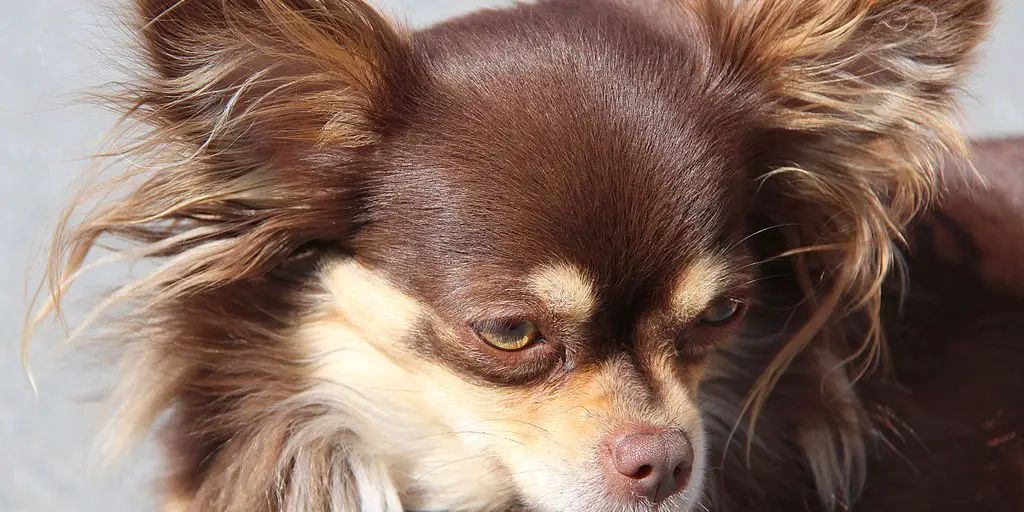If your dog is becoming aggressive when you attempt to take off its harness, it is likely due to fear, anxiety, and stress. However, understanding why and how to change its behavior is critical.
Dogs are usually friendly and loyal companions who can bond uniquely with their owners. Unfortunately, some dogs may have specific triggers that turn them from loving pets into aggressive ones in seconds.
One of these triggers may be the removal of a dog’s harness – a tool used for walking, control, and training.
So, this blog post explores why your dog is aggressive when taking harnesses off and how you should handle it.
Causes and Reasons for Dog Aggression Towards Removal of Harness
If your dog is suddenly exhibiting aggression towards the removal of their harness, it could be for one of several reasons. Seven reasons for this behavior are listed below:
- Your dog can be experiencing stress or anxiety. The harness may be a source of comfort for them, and removing it can trigger feelings of insecurity.
- Your dog can be in pain or uncomfortable. If the harness is tight or chafing, your dog may associate the removal of it with pain.
- Your dog may be protecting its territory. If it sees the harness as a symbol of dominance, it may become aggressive when it is removed to assert its dominance.
- Your dog may be possessive of their harness. If they view the saddle as valuable, they may become aggressive when someone tries to remove it from them.
- Your dog may be afraid of being separated from you. If they view the harness removal as a sign that they will be away from you, they may become anxious or scared, leading to aggression.
- Your dog may have learned that aggression gets them what they want. If you have inadvertently rewarded your dog’s aggressive behavior in the past, they may have learned that it is an effective way to get what they want.
- Your dog may be displaying aggressive behavior due to a medical problem.
If your dog suddenly exhibits aggression, it’s essential to rule out any possible medical causes before assuming it is behavioral.
Prevention of Dog Aggressive Behavior When Taking Harness Off
If your dog displays aggression when taking their harness off, it’s essential to take action to prevent this behavior from continuing. You can do a few things to make your dog more at ease and keep them from misbehaving.
- First, try acclimating your dog to being without its harness for short periods. Start by taking it off for a few seconds while petting or playing with them.
- When putting on and removing the harness, remain composed and assertive. Dogs can sense our emotions and react accordingly if we’re tense or nervous.
- Establish a process for putting the harness on and taking it off. Your dog will be more prepared and able to stay on task if you do this.
- It’s also essential to ensure that taking their harness off isn’t associated with negative experiences for your dog. If they always get put in their crate or left alone when not in their saddle, they will likely start feeling anxious when the harness comes off.
- Ensure they always have positive experiences – like treats or walks – when not in their saddle.
- Avoid punishing your dog while putting on or taking off the harness. This will only increase your dog’s anxiety and make the experience more stressful.
- Be careful not to startle your dog when taking off the harness. To avoid unduly frightening him, approach quietly and deliberately.
- Finally, if your dog still has trouble adjusting, unique calming products are made specifically for dogs who get anxious when taking their harness off. These can help reduce stress and make the experience more positive for your dog overall.
Obedience Training May Also Reduce Aggressive Dog Behavior
If you’re struggling with an aggressive dog, consider enrolling them in an obedience training class. It may just help to reduce their aggression.
Obedience training will help your dog learn basic commands and may also reduce aggressive behavior when the harness is removed.
There are a few reasons why obedience training may reduce aggressive behavior in dogs.
First, when dogs are properly trained, they understand their behaviors have repercussions. If your dog bites or attacks someone, they’ll be punished accordingly.
Second, by teaching your dog basic commands like “sit” and “stay,” you can control them better when they’re acting aggressively. With proper control, you can redirect their aggression toward something else (like a toy) instead of someone else.
Third, obedience instruction can help you and your dog grow closer in your relationship. This stronger bond may make your dog less likely to behave aggressively toward you or others.
Dog Bites When Taking Harness Off
Dogs may bite when taking a harness off due to discomfort, fear, or anxiety. A tight or uncomfortable harness, negative past experiences, or the end of an enjoyable walk often trigger it. Addressing this behavior involves ensuring a proper fit, positive reinforcement, and understanding the dog’s emotions.
Why Do Some Dogs Get Nippy When Unharnessing?
First, let’s get into the minds of our furry friends. Imagine wearing a cozy and snug onesie. You’re loving it, feeling all comfy. Now, someone comes along and wants to take it off – you might not be too thrilled. Well, our dogs can sometimes feel the same way about their harnesses.
Possible Causes:
- Overstimulation: Dogs are often excited before walks, and transitioning from an energetic adventure to being confined by a harness can lead to irritation.
- Sensitivity: Some dogs are more touch-sensitive than others. Removing the harness might accidentally hit a sore spot or trigger discomfort.
- Resource Guarding: Dogs, like us, value their belongings. A harness becomes their “stuff,” and they might not want anyone messing with it.
Training Tips to Tackle the Snappish Behavior:
- Positive Associations: Make removing the harness a good thing. Reward your dog with treats or praise each time you take it off. This helps them see it as a positive experience.
- Desensitization: Gradually get your dog used to the harness-removal process. Touch them gently in the areas where you’ll be handling the harness. This helps reduce sensitivity.
- Distraction Technique: Keep a treat or a favorite toy ready. As you start to remove the harness, offer the distraction. Your dog’s focus might shift from the harness to the tasty treat.
- Training “Leave It”: Teach your dog the command “leave it.” This can be handy if he starts getting nippy. Use it when he begins to show signs of discomfort.
Preventing the Snappiness:
- Choose the Right Harness: Opt for an easy harness to wear and take off. The more hassle-free the process, the less likely your dog will be bothered.
- Regular Handling: Make it a routine to touch and handle your dog’s body, especially the areas the harness covers. This helps them become accustomed to human touch.
- Routine and Predictability: Dogs thrive on routines. Knowing what to expect makes them less likely to feel surprised or defensive.
- Professional Help: If the biting behavior persists or escalates, don’t hesitate to contact a professional dog trainer or behaviorist. They can provide tailored guidance based on your dog’s unique temperament.
Remember, every dog is an individual with their quirks. Be patient, stay calm, and work at their pace. With some positive training and a sprinkle of understanding, your pup will soon be the harness-removing champion you both want them to be.
Take Your Dog to Medical Treatment If His Aggressive Behavior Doesn’t Develop
While it’s true that some dogs will outgrow their aggression, others will not. If your dog’s behavior does not improve with training and obedience, it may be time to consider medication.
Several different medications can help reduce aggression in dogs. These include anti-anxiety drugs, antidepressants, and mood stabilizers. However, these drugs should never be given to your dog without an expert’s advice.
So, ensure to take your dog to a medical specialist. They will better assist your dog’s behavior and offer the best course of action depending on the severity of the dog’s aggression and the underlying cause.
Prepare Your Dog for Medical Treatment Beforehand
When preparing your dog for medical treatment, you should do these things in advance to ensure it goes as smoothly and stress-free as possible.
Be Calm and Assertive: Stay calm and assertive when taking your pup to medical treatment. Your dog will become more uneasy the more anxious you are, which might worsen things. Speak calmly and confidently to your pet so he knows you control the situation.
Exercise Beforehand: Taking your pup for a walk before his appointment can help him release any pent-up energy and reduce his stress levels at the vet or doctor’s office. This will also tire him out, so he’s more likely to stay calm during his appointment.
Conclusion
In conclusion, it is essential to remember that aggression towards humans when taking off a harness is a common problem in dogs. Identifying the cause of this behavior and using positive reinforcement and consistent training to modify it is crucial.
Ultimately, understanding why your dog is aggressive when taking harnesses off can help you and your dog form a stronger bond and ensure that your dog is safe and comfortable when removing their harness.



